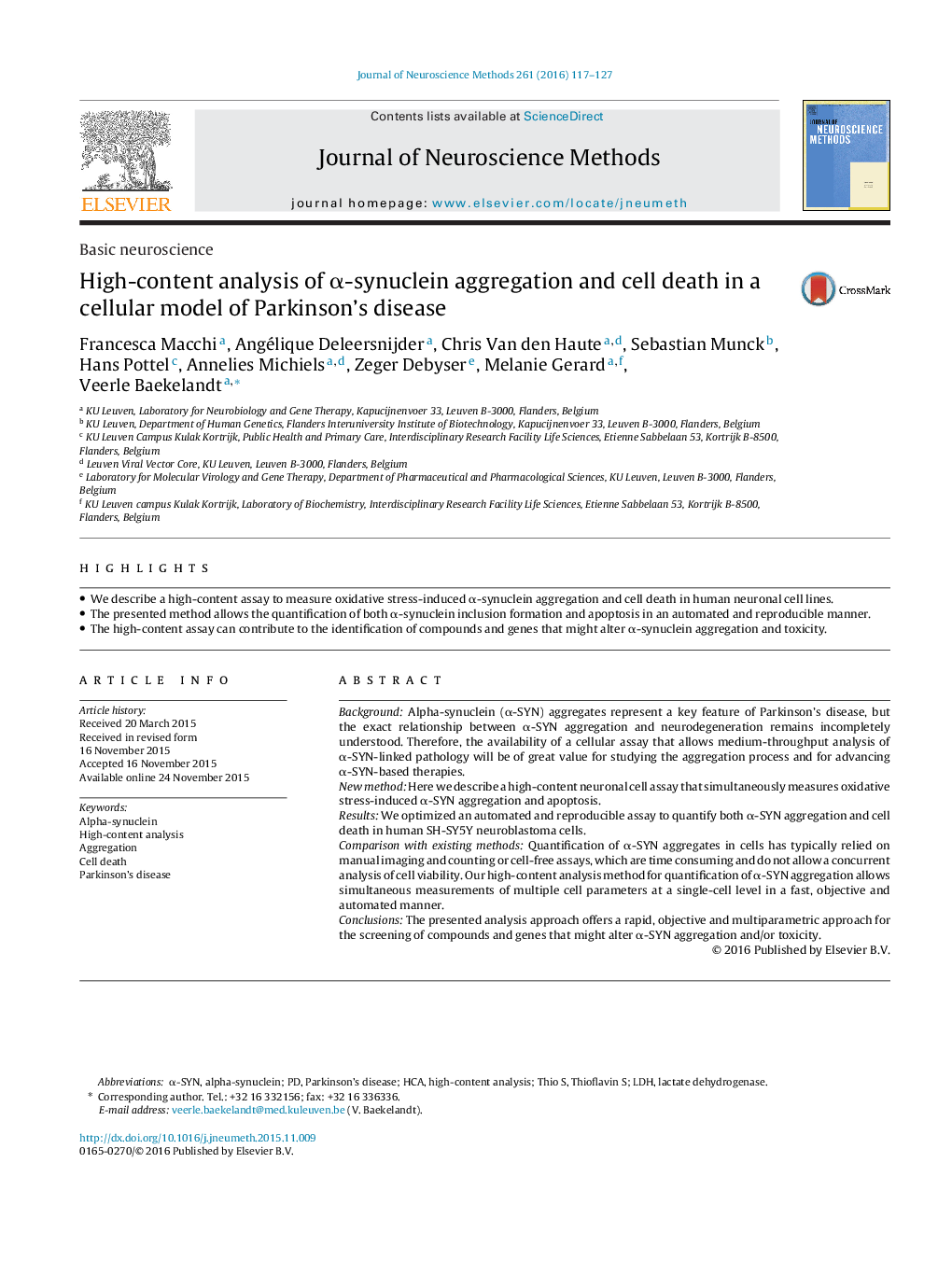| Article ID | Journal | Published Year | Pages | File Type |
|---|---|---|---|---|
| 6267788 | Journal of Neuroscience Methods | 2016 | 11 Pages |
â¢We describe a high-content assay to measure oxidative stress-induced α-synuclein aggregation and cell death in human neuronal cell lines.â¢The presented method allows the quantification of both α-synuclein inclusion formation and apoptosis in an automated and reproducible manner.â¢The high-content assay can contribute to the identification of compounds and genes that might alter α-synuclein aggregation and toxicity.
BackgroundAlpha-synuclein (α-SYN) aggregates represent a key feature of Parkinson's disease, but the exact relationship between α-SYN aggregation and neurodegeneration remains incompletely understood. Therefore, the availability of a cellular assay that allows medium-throughput analysis of α-SYN-linked pathology will be of great value for studying the aggregation process and for advancing α-SYN-based therapies.New methodHere we describe a high-content neuronal cell assay that simultaneously measures oxidative stress-induced α-SYN aggregation and apoptosis.ResultsWe optimized an automated and reproducible assay to quantify both α-SYN aggregation and cell death in human SH-SY5Y neuroblastoma cells.Comparison with existing methodsQuantification of α-SYN aggregates in cells has typically relied on manual imaging and counting or cell-free assays, which are time consuming and do not allow a concurrent analysis of cell viability. Our high-content analysis method for quantification of α-SYN aggregation allows simultaneous measurements of multiple cell parameters at a single-cell level in a fast, objective and automated manner.ConclusionsThe presented analysis approach offers a rapid, objective and multiparametric approach for the screening of compounds and genes that might alter α-SYN aggregation and/or toxicity.
